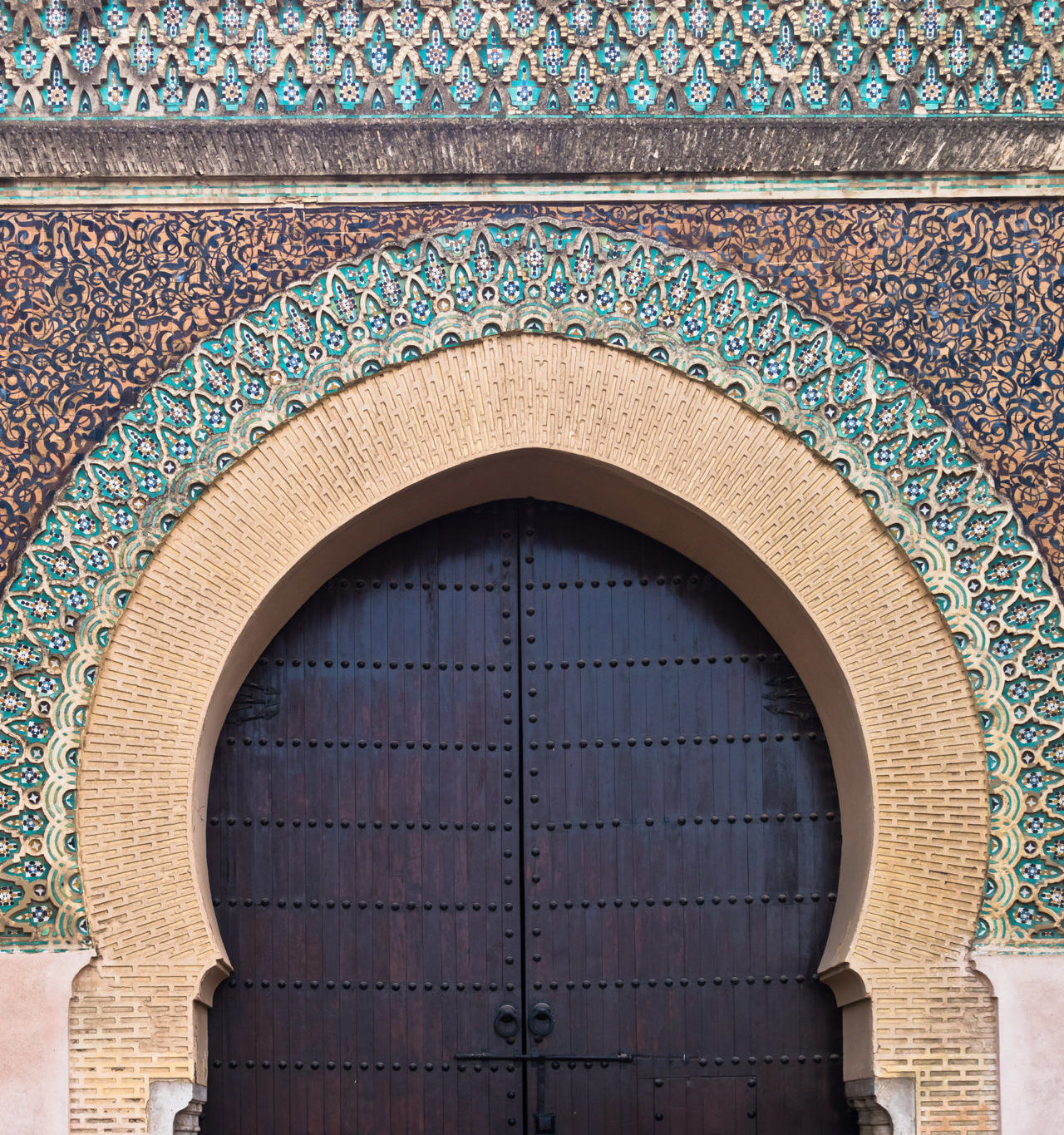It is generally believed that Habs Qara was a prison during the time of Moulay Ismail. Given his reputation…

The city of Meknes was founded in the 10th century by the Zenete Meknassa tribe. The city’s name is derived from this tribe. Situated between the Rif and Middle Atlas Mountains and between the Atlantic Ocean and the Sahara, it has been a pivotal city throughout the history of Morocco.
Meknes is one of four imperial cities of Morocco. It shares this distinction with Fes, Rabat, and Marrakech, each having the been capital of Morocco at least once.
Moulay Ismail, the sultan of Morocco between 1672 and 1727 redesigned the city due to his obsession for building defense structures. For this reason Meknes has often been called the Versailles of North Africa. He surrounded the city with 25 miles (40 km) of earthen walls to keep the more than 45 regional Berber tribes out.
Under Moulay Ismail’s leadership, the city was built to withstand a hypothetical 20-year siege. Encased within the walls were granaries, a water reservoir, and concentric systems of ramparts that surround the medina, the imperial city, and the Royal Palace.
Despite Moulay’s Ismail’s tyrannical reign, the country of Morocco was unified under government control for the first time in five centuries with Meknes as its capital. Durin

... rose-hued, star-shaped, endless sets of broken lines, unimaginable geometric combinations that confuse the eye like a labyrinthine puzzle, always in the most original and masterly taste, have been gathered here in thousands of bits of varnished earth, in relief or recessed, so that from a distance it creates the illusion of a buffed and textured fabric, glimmering, glinting, a priceless tapestry placed over these ancient stones to relieve the monotony of these towering wallsPierre Loti (1850 - 1923) French Novelist speaking about Bab Mansour Gate in Meknes.

It is generally believed that Habs Qara was a prison during the time of Moulay Ismail. Given his reputation…


Within the ruins of the palace lies Heri es-Souani, once the city’s stables and granaries. In its time, it…

Moulay Ismail, Morocco’s “Warrior King,” had his final resting place constructed during his lifetime. Non-Muslims can enter the mausoleum…

Moulay Ismail, Morocco’s “Warrior King,” had his final resting place constructed during his lifetime. Non-Muslims can enter the mausoleum, but not the tomb room. The interior of the mausoleum is beautiful. It is comprised of zellij, intricate carved plaster, arches, fountains, courtyards, and marble columns.

Another gateway into the beautiful city of Meknes is Bab El-Khemis. This well preserved gate features Moroccan craftmanship…

This is a good starting place for exploring the medina. It’s also a fabulous place for people watching since…


The city’s historic sites are primarily in the medina. From museums, mausoleums, and of course the souks, Meknes has…

The city’s historic sites are found primarily in the medina. From museums, mausoleums, and of course the souks, Meknes has plenty to keep visitors interested. The medina was added as a UNESCO World Heritage site in 1996. According to UNESCO, there are more than 80 monuments enlisted in the city, including mosques, gardens, hammams, kasbahs, Islamic schools, fondouks, and even the Royal Palace. The city used to be known as the “City of 100 Minarets.” The Grand Mosque, one of the city's most famous structures, dates back to the 12th century. It’s located in the heart of the medina, and its green minaret can be seen from outside of the medina walls. This mosque is closed to non-Muslims. This Spanish-Moorish city is often overlooked by travelers simply because it is smaller and less known. But don’t miss out on the beauty of Meknes. Find out how we can customize your tour to include this beautiful imperial city of Morocco.

One of the grandest gates of all the imperial cities is Bab Mansour. It is through this gateway that…

One of the grandest gates of all the imperial cities is Bab Mansour. It is through this gateway that people would enter the former imperial city. Today, the gate remains closed most of the time, and foot traffic can enter the square through a smaller door in the wall just left of the gate. The gate was originally built in 1732 by Moulay Abdallah, the son of Moulay Ismail. Legend says that the gate was originally planned by the senior Moulay and its original purpose was to pay homage to the sultan. To that end, the door is adorned by zeillij tiles and engraved Koranic panels. The tiles were originally green and white, but have faded over time. If you look closely, you can see an illusion of embroidered cloth over much of the gate’s arch. The gate is 52 feet (16m) tall and is named for its designer, El Mansour. Although Meknes has more than 20 gates along its 40 km of walls, Bab Mansour stands out as unique. It is widely considered as one of the most splendorous gates in North Africa.